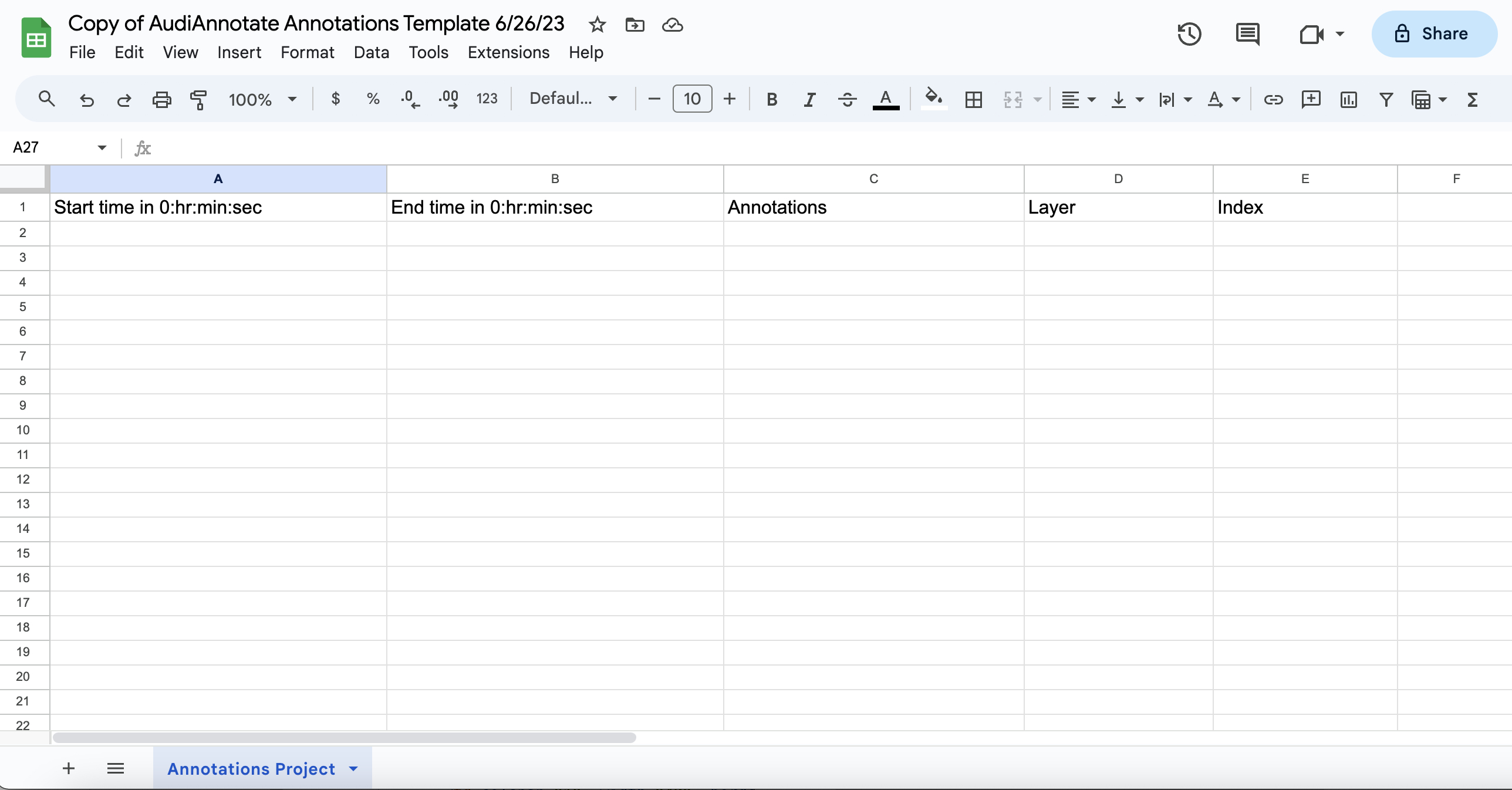Annotation
| Time | Annotation | Layer |
|---|---|---|
| 0:40–0:46 | Clement, Tanya, Brumfield, Ben, & Brumfield, Sara. (2022). The AudiAnnotate Project: Four case studies in publishing annotations for audio and video. Digital Humanities Quarterly, 16(2). https://www.digitalhumanities.org/dhq/vol/16/2/000586/000586.html | Citation |
| 1:24 |

|
Image |
| 1:19–1:24 | Part of my job as a graduate research assistant for AVAnnotate was to create a different Sheets template which utilizes the hh:mm:ss format, instead of a total seconds format. In my opinion, I prefer the hh:mm:ss format, as this is easier to use and is more widly used when timestamping. | GRA Context |
| 3:00–3:01 | While working as a graduate research assistant for AVAnnotate, I've been able to interact with many different users who have created different exhibits, and how each individual annotates is very different. This experience has informed how I understand the annotations in column C to be used for a variety of goals. Therefore, AVAnnotate allows for individual users to integrate their conceptualization of annotation into an exhibit with flexibility and creativeness. | GRA Context |
| 4:17–4:29 | Regarding teaching and sound, I've contributed a project to the SpokenWeb Digital Anthology titled "Spaces and Dreams in Muriel Rukeyser's The Speed of Darkness," which discusses the use of sound and AVAnnotate in more detail (currently under review with Scholarly Editing: The Annual of the Association for Documentary Editing). My participation and assistance with this project has informed my opinion of AVAnnotate as a teaching tool focused on the sonic experience of audio artifacts. | GRA Context |
| 4:44–4:49 | The Index column can be used across multiple audio files in a single project. This allows for users to communicate and find information across large individual or collaborative projects. This feature was tested and fully integrated during my graduate research assistantship, and I've found it to be a helpful addition for certain exhibits. | GRA Context |
| 0:21–0:25 | Regarding the spreadsheets, and according to AVAnnotate's Getting Started page, users can upload their annotations in CSV and TSV format, so, realistically, annotations can be made in this text format as well as the other spreadsheet softwares. | Information |
| 0:26–0:33 | AVAnnotate doesn't allow for annotation to happen within the software as this would require a more complex and heavy infrastructure, which doesn't align with the minimal computing goals of the software. | Information |
| 2:06–2:10 | Due to any spreadsheet's requirement of manually inputting timestamps, I've found that this manual process of annotating acutely and accurately makes me focus more on where a sound is, not what a sound is. AVAnnotate asks users to temporarily tune out the audio itself, separating the task of making meaning of sound and marking those same sonic moments. Conceptually, this is a helpful and unique practice for users who are working with audio material. | Information |
| 2:48–2:51 | I say "almost anything," as there are technological restrictions. GitHub may not be able to support the format of an annotation, or a user's skillset may prevent them from being able to create certain annotations. In my experience of working on this review, finding ways to annotate that are supported by AVAnnotate's Jekyll template is sometimes difficult and requires research. | Information |
| 3:18 | Part of the purpose of AVAnnotate is to create more information about audio materials so these files can be more discoverable. Metadata, in part, accomplishes this. | Information |
| 4:33 | The Layers column is a requirement in AVAnnotate, which is helpful but also unnecessary for some projects. To create an AVAnnotate project, one must have at least one layer, and this may be confusing for users who don't require characterization of their annotations. | Information |
| 5:33–5:43 | In my own experience with AVAnnotate, I've had to change the framework and annotations of my project multiple times, all due to the workflow's use of Layers and Index. This is helpful as it asks me to reflect on my decisions and makes me more aware of how I'm using sound. | Information |
Annotation at Internet Archive.
IIIF manifest: annotation/manifest.json